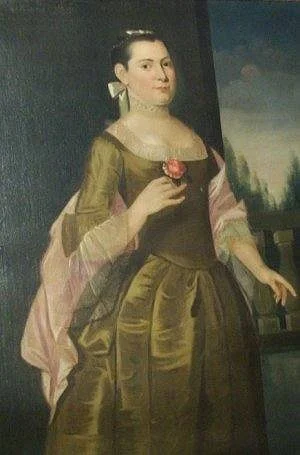The first meeting was called by Mrs. Isabel Norton Chappell, a member of the National Society, held at her home at 11 Channing Street, New London, Connecticut, on Columbus Day, October 21, 1892. Mrs. Chappell had previously been appointed regent of the new chapter by the State Regent, Mrs. De B. Randolph Keim, this being the first Chapter in Connecticut organized under Mrs. Keim’s direction. The only one earlier, that of the “James Wadsworth” Chapter, NSDAR of Middletown, Connecticut was formed independently previous to this time and before the state regent assumed office.
At the first meeting, the rooms were decorated in a generous display of red, white, and blue, and tea was served to the original eighteen members on a table once owned by Esther Chapman, the great-great-great-grandmother of one of the chapter members, and the wife of Lieutenant Richard Chapman, who lost his life at the Battle of Groton Heights.
State Regent Mrs. Keim, in her address to the Second Continental Congress of the National Society in Washington, D.C. on February 2, 1893, stated:
“In New London, the City in which the Traitor Benedict Arnold dined on that memorable September 6, 1781, and from the hills he watched the burning of the beautiful homes of massacred Groton and New London patriots, I organized on October 21, 1892, with the aid of its able Regent, Mrs. W. Saltonstall Chappell, the second Chapter in this state. They chose the name of Lucretia Harris Shaw, that they might honor a noble woman who died caring for the stricken prisoners returned from the Wallabout Bay prison ships of the British.”
At the end of it’s first year, the Lucretia Shaw Chapter, NSDAR. had grown to thirty-six members and was well on it’s way to over a century of community service in honor of America’s Revolutionary War Patriots.
An Early Contribution
One early chapter contribution involved the creation of a “Liberty Bell,” which was displayed at the Chicago Exposition. The chapter sent various ancient coins and other relics which were melted down wit thousands of other similar contributions to create the bell. Standing seven feet high, and weighing over 13,000 pounds, the bell was tolled on the anniversaries of the great historic events relating to the growth of liberty.

